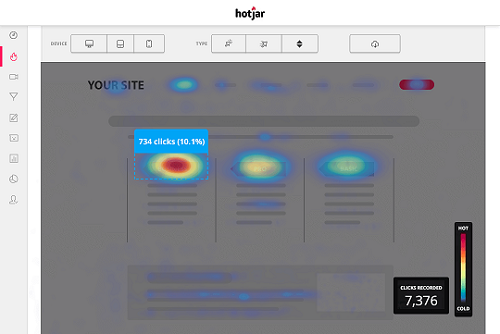Social Media Report: How Reliable is Social Media during a Disaster
Social media offers new channels for user-generated content and interactive communication through diverse mobile and web-based tools. Platforms like Twitter and Facebook are used widely globally and their significance is growing during times of man-made or natural disasters. Owing to their user-friendliness, social media platforms relay information efficiently, thus offering better situational awareness, essential for emergency response.
Nearly a million individuals get affected by natural disasters every year. Within the US only, around 400 people perish due to disasters, which cost approximately $17.6 billion to the economy. Social media is vital as it links fast responders with disaster victims.
In 2009, Zogby Interactive reports that a majority of adults in America prefers the internet as their most reliable news source. The public gets more active online during disasters and turn to social media increasingly. The Crisis Communication Management Team also reported in 2012 after the 2011 Tsunami hit Japan, over 5,500 tweets were communicated per second concerning the disaster.
Overall all these statistics imply that the public generally expects emergency operators to monitor what they post on social media and respond promptly to their requests for assistance. The emergency managers therefore need to keep tabs on its various trends and happenings so as to be more effective in service delivery.
Disaster communication touches on disaster information which gets disseminated to the general public by emergency management bodies, governments and disaster responders. It as well refers to data information produced and shared by journalists with the public. Communication about disasters is occurring increasingly via social media and other traditional forms like print, electronic and word-of-mouth too.
Individuals turn to Social Media for various reasons. These include when they need convenience, humor and levity, timely and unfiltered information, personal recommendations on diverse subjects, products or services. In addition, people engage this media form when seeking to maintain a communal sense especially after something shocking takes place.
The communication tool is crucial as it not only helps determine the state of family and friends, but equally in mobilizing essential support services when disasters occur. However, certain concerns might turn off the public from utilizing social media. Among these are security and privacy fears, knowledge deficiencies, access issues and accuracy concerns.
National Science and Technology Council defines the term disaster as any serious event that disrupts societal or communal functioning thereby prompting widespread human, economic, material or environmental losses. Such effects it adds should exceed ability of the persons affected to deal with it independently.
Though at times equated with crises, disasters are essentially community-based events, while crises are known to be organization-based. Key occurrences such as the terrorist attacks of September 11, 2011 and 2005 Haitian Earthquake have shown that disasters can present various crises for organizations. This could happen if the public gets concerned about how well such bodies manage disasters in particular.
Social media consists of digital tools that are highly interactive and feature content which users could generate, manipulate or even influence. Such channels encourage Web users to share new information in timely manner and interact constructively across a large platform on such happenings.
Traditional media in fact have played a significant role in reporting disasters if and when they happen at once. However, they have in part turned into archaic methods which mostly facilitate only one way of disseminating information. In contrast, social media can provide opportunities for individuals, the public and organizations to dialogue with each other at times when disaster strikes.
The real of social media encompasses a host of mobile and web-based applications that range from sharing of videos and photos to review and rating forums on internet sites. Below are diverse types of social media platforms and a few well-known examples of each:
- Blogs: WordPress, Blogger, Discussion Forums LiveJournal, ProBoards
- Micro-blogs: Twitter, Tumblr
- Social Bookmarking: Diigo, Del.icio.us
- Social News Sources & Discovery Engines: Stumble, Reddit, Slashdot,Upon
- Social/Professional Networking: Google+, Facebook, MySpace, LinkedIn
- Social Rating/Reviews: Yelp, AngiesList
- Video/Photo Sharing & Podcasting: Youtube, Flickr, Pinterest, iTunes Podcasts
- Video/Text Chatting; AIM, Skype, mobile texting
- Wikis: Wikispaces Wikipedia
Another researcher has also attempted to classify social media into some other five groups of interest. According to Edwards, Group 1 consists of those forms allowing the public opportunities to interact and share information with each other. The group may also be represented through another categorization. It involves networks like Facebook, LinkedIn and MySpace, wikis like Wikipedia, multimedia sharing sites like Flickr and YouTube, bookmarking sites like Digg and Del.icio.us, virtual worlds like Second Life and rating sites like Yelp. Tools like these are capable of facilitating exchange of information regarding various brands and products.
Group 2 is made up of media which provide ways of keeping updated on news and activities like RSS, tagging and Twitter. Such tools encourage buzz and may facilitate campaigns which could run viral. Group 3 comprises of the social platforms which deliver services based on locations, like Gowalla, Foursquare and Hotspot. These media allow for immediate sales opportunities and constant tracking.
Group 4 features media that support social gaming, like Words with Friends, Zynga and Farmville. Group 5 incorporates the media forms which promote social couponing, among them LivingSocial, Groupon, deals.com and LivingSocial.
Tools like these afford businesses a chance of viewing the influence consumers have on each other as they sell products simultaneously. Indeed, the rapid growth of social media technologies together with that of individuals applying them are real evidence of their impact on present-day society. This trend easily explains why institutions of government, corporations and nonprofit bodies are engaging social media with urgency. They are finding the mode of communication very strategic in the quest to build relationships with stakeholders whether routinely or at times of disaster.
It is therefore of critical importance for all parties involved in handling disaster situations to keep a keen eye on the developing trends of social media. This type of media is proving to be a unique and effective communication channel that is clearly turning out to be highly trusted among individuals across board. As such, it could easily become the natural form for updating the masses with any kind of useful news not very long from now.
Written by TeamSMF
Contact us on Twitter, on Facebook, or leave your comments below. To find out about social media training or management why not take a look at our website for more info http://socialmediacambridge.co.uk/
Social Media Report: How Reliable is Social Media during a Disaster
![]() Reviewed by Alex Carson
on
Wednesday, January 29, 2014
Rating:
Reviewed by Alex Carson
on
Wednesday, January 29, 2014
Rating:














 Entrepreneur, international speaker on Social Media Marketing. First one in the UK to write and speak in conferences about Twitter as a marketing tool. Consultant to Corporate Companies, Government Organizations, Marketing Managers and Business Owners.
Entrepreneur, international speaker on Social Media Marketing. First one in the UK to write and speak in conferences about Twitter as a marketing tool. Consultant to Corporate Companies, Government Organizations, Marketing Managers and Business Owners. Aspiring novelist with a passion for fantasy and crime thrillers. He hopes to one day drop that 'aspiring' prefix. He started as a writer and soon after he was made Executive Editor and Manager of the team at Social Songbird. A position he held for 5 years.
Aspiring novelist with a passion for fantasy and crime thrillers. He hopes to one day drop that 'aspiring' prefix. He started as a writer and soon after he was made Executive Editor and Manager of the team at Social Songbird. A position he held for 5 years. Musician, audio technician, professional tutor and a Cambridge university English student. Interested in writing, politics and obsessed with reading.
Musician, audio technician, professional tutor and a Cambridge university English student. Interested in writing, politics and obsessed with reading. Recently graduated with a BA in English Literature from the University of Exeter, and he is about to study an MA in Journalism at the University of Sheffield. He is an aspiring journalist and novelist; in his free time he enjoys playing chess, listening to music and taking long walks through nature.
Recently graduated with a BA in English Literature from the University of Exeter, and he is about to study an MA in Journalism at the University of Sheffield. He is an aspiring journalist and novelist; in his free time he enjoys playing chess, listening to music and taking long walks through nature. Lucy is an undergraduate BSc Politics and International Relations student at the London School of Economics and Political Science.
Lucy is an undergraduate BSc Politics and International Relations student at the London School of Economics and Political Science. Anna Coopey is a 4th year UG student in Classics at the University of St Andrews in Scotland. She is a keen writer and researcher on a number of topics, varying from Modern Greek literature to revolutionary theory.
Anna Coopey is a 4th year UG student in Classics at the University of St Andrews in Scotland. She is a keen writer and researcher on a number of topics, varying from Modern Greek literature to revolutionary theory.
